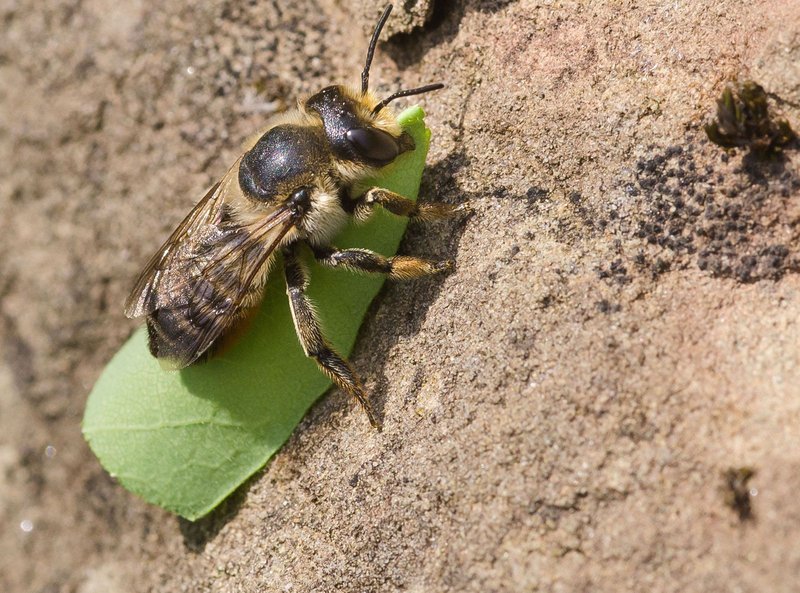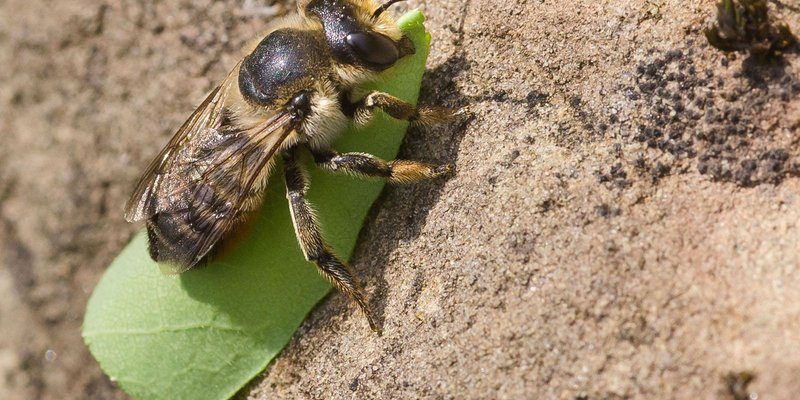
Identifying these bees isn’t as tricky as it sounds. You’ll often find them busy at work in your backyard, and knowing what to look for can help you appreciate their role in the ecosystem. Let’s break down how to identify leafcutter bees and why they’re more than just your garden’s little leaf thieves.
What Are Leafcutter Bees?
Leafcutter bees belong to the family Megachilidae, and they’re known for their unique behavior of cutting leaves. Unlike honeybees, which live in large colonies, leafcutter bees are typically solitary. Each female finds a spot to make her nest—often in hollow stems or underground—and gathers leaves to line the walls. This might sound a bit odd, but those leaves help create a cozy environment for her eggs, ensuring they have a safe space to grow.
You might be wondering why they cut leaves. The answer is simple: to create brood cells. These cells house their larvae, providing them with both protection and food as they develop. The leaves serve a dual purpose, too; they keep the cells moist, which is crucial for the larvae’s survival.
Physical Characteristics of Leafcutter Bees
So, how do you spot a leafcutter bee? They have some distinct physical features. Generally, they’re medium-sized, measuring about 12 to 16 mm in length. Their bodies are covered in short, dense hairs, giving them a fuzzy appearance. This fuzziness isn’t just for looks—it helps them collect pollen as they flit from flower to flower.
One key characteristic to look for is their shiny black or metallic green body. Depending on the species, you might see some with orange or tan markings. The females are particularly important to identify because they carry a specialized structure on their hind legs known as a pollen basket. This basket is used to transport pollen back to the nest, so if you see a bee with a full basket, you might just have a leafcutter bee in your garden!
Behavior and Habitat
Leafcutter bees are known for their unique behavior when it comes to nesting. After a female cuts leaves, she shapes them into pieces that fit perfectly in her nesting site. You might notice them flying around your garden in a zigzag pattern, looking for the right leaves to snip. It’s like they’re on a mission, and they take their jobs seriously!
They prefer to nest in the ground or inside hollow stems. If you have dead wood or stems lying around, you’re likely providing an ideal home for these bees. They thrive in warm, dry areas, often found in gardens rich with flowering plants. If you want to attract them, consider planting native flowers—leafcutter bees are attracted to a variety of blooms, especially those that produce abundant pollen.
Common Types of Leafcutter Bees
There are several types of leafcutter bees, but a couple of the most common ones include:
- Megachile rotundata: This is perhaps the most well-known leafcutter bee, often found in gardens and agricultural fields. They’re easily recognizable by their slightly rounded bodies and preference for alfalfa.
- Megachile campanulae: This species is known for its unique nesting habits. They tend to use flowers and plant materials to create their nests, making them vital for pollination.
While these are just two examples, each species has its unique traits and nesting preferences. Understanding these differences can help you appreciate the diversity of leafcutter bees in your area.
How to Encourage Leafcutter Bees in Your Garden
If you’re excited to have leafcutter bees frequenting your garden, there are a few steps you can take to make your space more inviting. Here’s the scoop:
1. Plant Native Flowers: Leafcutter bees are drawn to plants that are native to your area. Flowers like clover, alfalfa, and sunflowers are fantastic options since they provide ample pollen and nectar.
2. Provide Nesting Sites: You can help these bees by leaving some areas of your garden a bit wild. Piles of twigs, brush, or even a few dead stems can serve as excellent nesting spots.
3. Avoid Pesticides: Chemicals can harm these beneficial pollinators. Aim to use organic gardening practices, giving leafcutter bees a safe haven to thrive.
4. Create Bee Hotels: If you’re up for a DIY project, consider building bee hotels. These are simple structures with hollow reeds, which mimic natural nesting sites and provide shelter for solitary bees.
By making these changes, you’ll ensure your garden becomes a bustling hub for leafcutter bees, helping support local biodiversity.
Identifying Leafcutter Bees in Action
One of the best ways to observe leafcutter bees is to watch them in action. You might see them working in the morning when temperatures are still cool. They often prefer warmer weather, and you’ll notice them darting from flower to flower, collecting pollen and nectar.
Take a moment to notice their flight pattern; it’s quite distinct! They tend to hover around plants, almost like they’re inspecting them before landing. If you catch a glimpse of them cutting leaves, it looks a bit like a craftsman at work. They make quick, precise movements, shaping the leaves into small circular pieces as they go.
You might find them more active in the spring and summer months, as that’s when they’re on the hunt for food and nesting materials. Just remember: they’re working hard, so give them the space they need!
Why Leafcutter Bees Matter
Leafcutter bees play a crucial role in our ecosystem. As pollinators, they help facilitate the growth of many plants, assisting in the production of fruits and vegetables. In fact, without these bees, many crops would struggle to thrive. They work alongside honeybees, but because they have different preferences, they can visit flowers that honeybees might not choose.
Understanding their importance can help us appreciate the beauty of nature. When you see the little leafcutter bees buzzing around, remember they’re not just “stealing” your leaves—they’re performing a vital service that benefits all of us. By nurturing these bees, you promote a healthier environment and contribute to the overall balance of our ecosystem.
Identifying leafcutter bees might seem a bit daunting at first, but with a little knowledge and observation, you can spot these fascinating creatures in your garden. From their unique physical traits to their essential role in pollination, leafcutter bees are truly remarkable insects.
By creating a welcoming space for them, you not only support biodiversity but also enjoy the beauty they bring to your garden. So next time you notice those little circular imprints on your plants, remember that it’s not just a nuisance; it’s a sign of nature’s industrious workers at play. Happy gardening!

